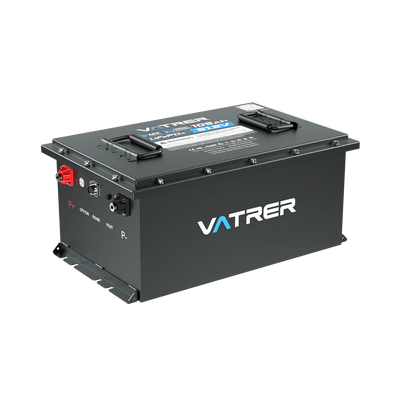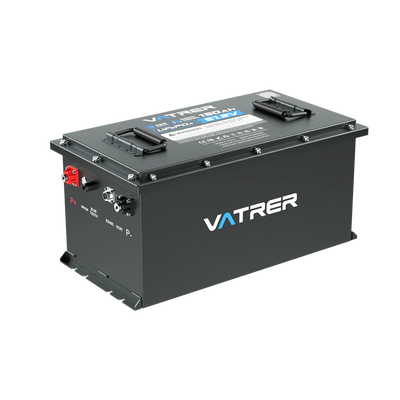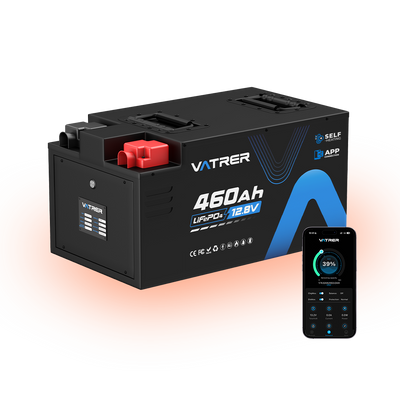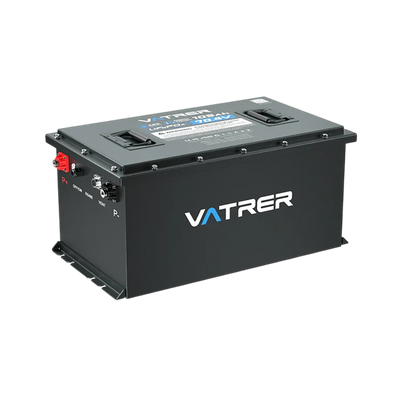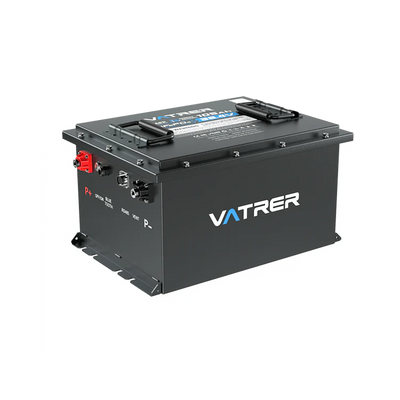
How Much Do Golf Cart Batteries Weigh
If you’ve ever picked up a heavy battery and asked yourself, “What’s the weight of this thing?”, you’re already thinking along the right lines. For a golf cart owner or operator, understanding golf cart battery weight is more than curiosity, it’s a practical factor that impacts performance, maintenance and cost.
Whether you’re measuring for transport, checking whether a replacement battery fits, or just comparing battery types, the weight of a golf cart’s power pack plays a significant role.
This article guides you through the primary types of batteries used in golf vehicles, their typical weights, the impact of weight on performance, and what to consider when upgrading, particularly to a lithium solution.

Key Takeaways
- A single battery in a golf cart typically weighs between about 50-80 lbs for traditional lead-acid units.
- Heavier batteries can reduce acceleration, shorten range, increase wear and complicate installation.
- Switching from lead-acid to lithium-ion batteries can slash weight by 50-70%, improve vehicle dynamics and lower lifetime costs.
- When buying, checking battery type, amp hour (Ah) ratings, dimensions and compatibility is just as important as the raw weight.
Tip: Always check compatibility with your cart model (voltage, tray size, terminal style) before purchase.
Why Understanding Golf Cart Battery Weight Is Important
A battery isn’t just a power source, it’s one of the heaviest single components in your golf cart. Its total mass affects how far you can travel on a single charge, how fast you can accelerate, and even how easily your cart handles uneven terrain.
Knowing the weight of a golf cart battery also helps in practical ways: it determines whether you can safely lift or replace it yourself, what kind of charger or tray you’ll need, and how much strain your suspension will endure over time.
Golf Cart Battery Types and the Impact of Battery Weight
Not all golf cart batteries are built the same, and their weight design plays a big role in how your cart performs. Each battery type uses different internal materials and manufacturing processes, directly determining the battery's weight, power output, and performance in daily use.
Lead-Acid Batteries
These are the most common batteries used in golf carts, made with dense lead plates and a sulfuric-acid electrolyte. Because of these heavy materials, they typically fall at the higher end of the golf cart battery weight range, about 60 to 80 lbs each.
- Impact on use: The added mass gives a stable ride and steady traction, especially on slopes, but also makes the cart slower to accelerate and harder to push manually.
- Maintenance: Flooded lead-acid batteries require regular water refills and terminal cleaning, while sealed types (AGM or Gel) reduce but don't eliminate upkeep.
Tip: The weight of a lead-acid pack can total over 400 lbs in a 48-volt system, plan for reinforced suspension and limited range per charge.
AGM (Absorbent Glass Mat) Lead-Acid Batteries
AGM batteries are a sealed form of lead-acid design where the electrolyte is absorbed in a glass-mat separator. They weigh slightly less than flooded types (typically 55-70 lbs each) but still use lead as the main conductor.
- Impact on use: They resist vibration better and can handle rougher courses, but the performance gain doesn't offset their relatively high weight.
- Maintenance advantage: They're virtually spill-proof and require no topping up, yet their deep-cycle life remains shorter than lithium options.
Lithium-Ion Batteries (LiFePO4)
Modern lithium golf cart batteries are a completely different story. Built with lightweight lithium-iron-phosphate cells instead of lead plates, these batteries weigh roughly one-third as much as a lead-acid equivalent, often 20-35 lbs per unit.
- Impact on use: The lower weight of the battery improves acceleration, extends range, and reduces mechanical wear on tires and suspension.
- Energy efficiency: Higher energy density allows more usable power with less total mass, meaning you carry less weight without sacrificing performance.
- Safety and stability: Built-in BMS (Battery Management System) ensures safe charging and discharge, while the chemistry resists thermal runaway.
- Maintenance: Fully maintenance-free and long-lasting, with up to 4,000 cycles and minimal degradation.
Typical Weight Ranges: Single Golf Cart Battery Weight
Here is a table showing typical weights for common battery voltages and chemistries to give you a clear reference:
| Voltage & Type | Typical Weight Range | Notes |
|---|---|---|
| 6V Lead-Acid | ≈58–68 lbs (26–31 kg) | Deep-cycle cart battery |
| 8V Lead-Acid | ≈60–77 lbs (27–35 kg) | Heavier than 6V units |
| 12V Lead-Acid | ≈55–88+ lbs (25–40 kg) | Higher capacity options |
| Lithium-Ion (various voltages) | ≈20–35 lbs (9–16 kg) | Lightest for same capacity |
The weight of a golf cart battery depends heavily on both voltage and chemistry.
Tip: Don't assume all batteries of the same voltage weigh the same, check Ah rating, casing, and manufacturer specs.
How Battery Weight Affects Golf Cart Performance
- Speed & Acceleration: A heavier battery means the motor needs to work harder. That usually translates into slower acceleration, especially on inclines.
- Range: More weight means more energy consumed just to move the mass, reducing the number of holes or miles you get on one charge.
- Handling & Maneuverability: Heavier batteries raise the center of gravity, slow down steering response and make tight turns harder. On the flip side, some additional weight can improve traction, but at the cost of agility.
- Vehicle Wear: Extra weight wears suspension, axles, bearings, tires and frames faster. A lighter battery equates to less structural strain and lower maintenance risk.
What Determines Golf Cart Battery Weight
- Chemical Composition: The heavier lead in traditional batteries versus the lighter metals and compounds in lithium-ion cells is a major reason why weights differ so much.
- Capacity (Amp-Hour/Ah): Higher Ah means more active material, more cells, more weight. So two batteries of the same voltage but different capacities can vary noticeably in weight.
- Voltage & Configuration: Higher system voltages or fewer, larger batteries may reduce total pack weight. For example, using a single 48V lithium battery pack instead of eight 6V lead-acid ones can cut the bulk and weight considerably.
- Case & Materials: Battery casing, brackets and handles add weight. A plastic tray may be lighter than a heavy metal one. Also, extra features for rugged carts (metal reinforcements) add mass.
- Aging & Sulfation: In lead-acid batteries, as plates sulfate and expand, the weight can even increase slightly. That adds a hidden burden to your cart. Lithium batteries, by contrast, maintain their weight much more steadily over time.
Lithium Conversion Guide: Switching to a Lithium Golf Cart Battery
If you're upgrading from lead-acid to a lithium pack, here are key steps and considerations:
Voltage match: Ensure the lithium pack matches your cart's system voltage (36V, 48V, etc.).
- Physical dimensions & tray fit: Even though lithium is lighter and smaller, ensure it fits securely in the tray.
- Terminal type & wiring: Confirm that the new battery's terminal style aligns with your cart's connectors.
- Charger compatibility: Lithium-ion chemistry often needs a specialized charger, traditional lead-acid chargers may damage lithium packs.
- Weight reduction benefits: A lighter pack (like the Vatrer lithium pack) improves handling, saves wear and extends life.
- Maintenance advantages: Many lithium packs are plug-and-play, require minimal maintenance and include built-in BMS for safety.
By switching to a high-quality lithium option, such as the Vatrer lithium battery line, you're choosing fewer batteries, less weight, better performance and lower maintenance overhead.
Tip: Always consult a qualified installer to ensure compatibility and safe conversion.
Conclusion
From the battery type (lead-acid vs lithium-ion batteries) to the configuration (6V, 8V, 12V) and capacity (Ah ratings), every factor influences both what the battery weighs and how it affects your cart's performance.
By choosing a quality lithium golf cart battery, such as a model from the Vatrer line, you benefit from lighter weight, fewer units, less maintenance and better handling.
Before you commit, make sure you've matched voltage, dimensions, capacity and wiring compatibility. In doing so, you're not just buying a battery, you're investing in a better driving experience.
Ready to upgrade? Consider switching to the Vatrer lithium golf cart battery conversion kit today and see the difference in weight, performance, and maintenance for yourself.
FAQs
How Can I Tell If My Golf Cart Battery Is Too Heavy For My Vehicle?
If your golf cart feels sluggish when accelerating, struggles on inclines, or consumes power unusually fast, your current battery setup may be too heavy for your vehicle's suspension and motor capacity.
Overweight battery packs also cause faster wear on tires, shocks, and bearings. To confirm, check the manufacturer's maximum battery weight specification and compare it with the total weight of your installed pack. If it exceeds that limit, upgrading to a lithium golf cart battery can resolve the issue while improving efficiency.
Does Battery Weight Affect Charging Time Or Energy Efficiency?
Yes, indirectly. Heavier batteries, especially flooded lead-acid types, often have higher internal resistance, meaning more energy is lost as heat during charging. This can lead to longer charging cycles and higher electricity use.
Lightweight lithium-ion batteries, by contrast, charge faster and convert energy more efficiently due to lower internal resistance and stable voltage output. The difference can translate into several hours of saved charging time per cycle.
Are There Any Safety Concerns When Handling Heavy Golf Cart Batteries?
Absolutely. Lead-acid batteries can weigh 60-80 lbs each and contain corrosive acid. Always use a lifting strap or dolly, wear gloves and eye protection, and disconnect all power sources before removal. Never lift a heavy battery alone. Lithium batteries, while much lighter and safer to handle, should still be installed carefully to prevent short circuits or terminal contact.
Tip: If you have limited lifting ability, consider hiring a technician to handle removal and installation, it's added safety.
How Does Battery Weight Affect Golf Cart Range In Real Use?
A heavier battery increases total cart mass, requiring more power from the motor. This extra load directly reduces your driving range, especially on hilly terrain or when carrying passengers. For example, replacing a 480 lb lead-acid pack with a 130 lb lithium pack can often extend range by 20-30%, since less energy is consumed moving unnecessary weight. Lightening the load also improves regenerative braking efficiency in electric carts.
Is There An Ideal Battery Weight For My Type Of Golf Cart?
There isn’t a universal “perfect” weight because it depends on your cart model, terrain, and usage. However, most 36V carts operate best with a total battery pack under 400 lbs, and most 48V carts under 450 lbs. Lightweight lithium systems deliver equal or greater performance with total weights around 120–150 lbs. Always check your cart manufacturer’s weight recommendation before upgrading.
Can Weather Or Temperature Affect Battery Weight Or Performance?
While temperature doesn’t change a battery’s weight directly, it influences performance and usable energy. Lead-acid batteries lose significant capacity in cold weather and can feel “heavier” in performance terms because they deliver less power per pound. Lithium batteries maintain steadier output across temperature ranges, especially models with built-in low-temperature protection or self-heating systems.
What Are The Long-Term Maintenance Benefits Of A Lighter Battery Pack?
A lighter battery reduces mechanical stress on your golf cart's chassis, frame, and drivetrain, which means fewer alignment issues, less tire wear, and lower maintenance costs. Lithium batteries also eliminate corrosion cleaning, water refills, and terminal upkeep. Over several years, the combined savings in parts, labor, and downtime often outweigh the initial investment difference compared to lead-acid options.
Share













































































